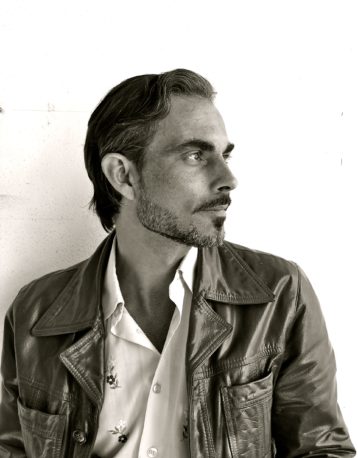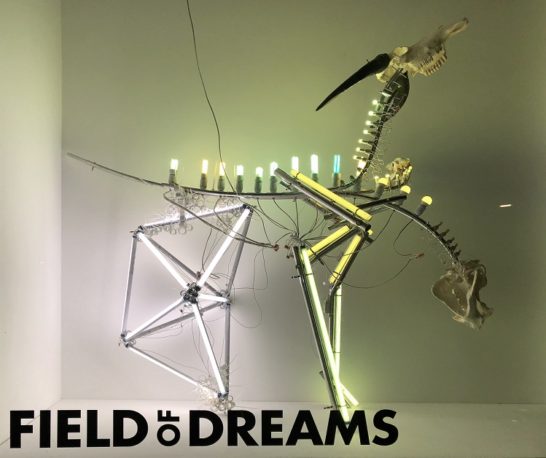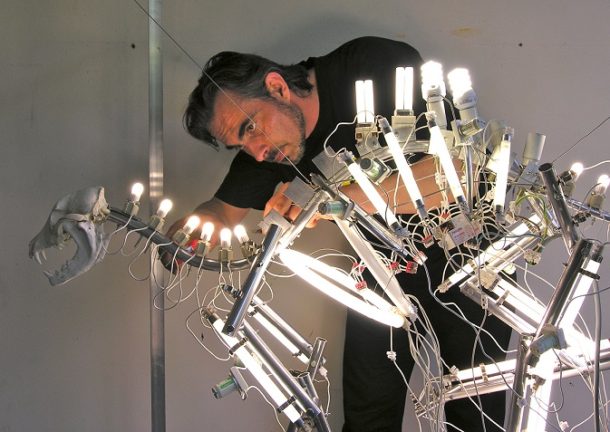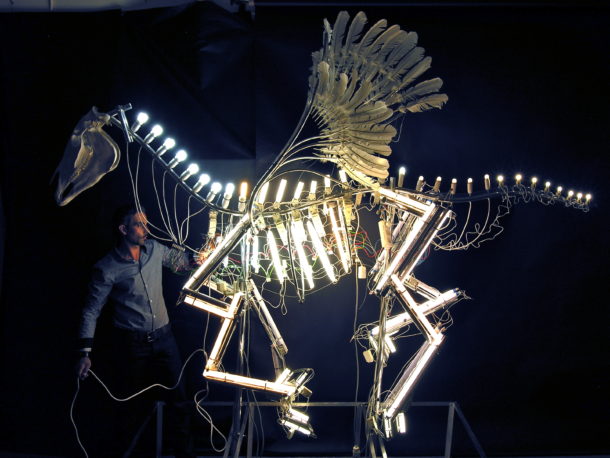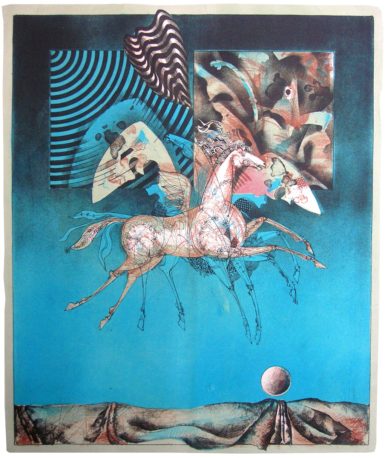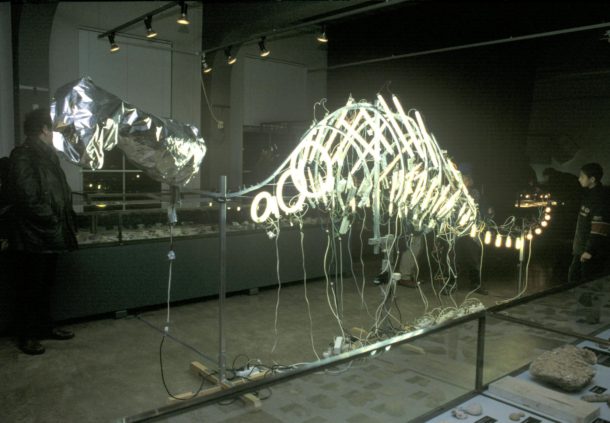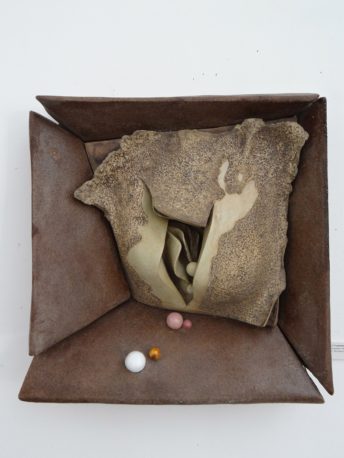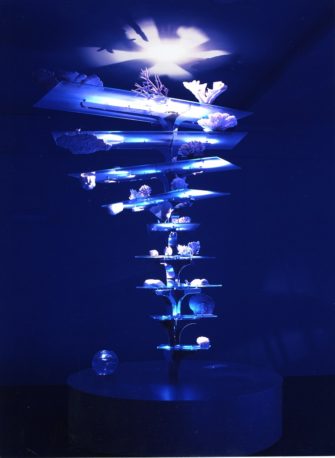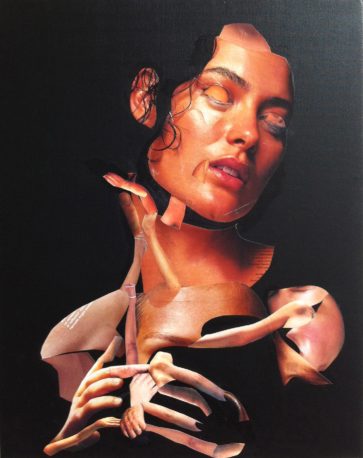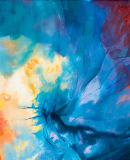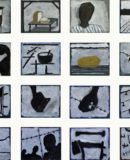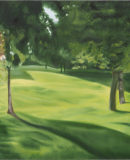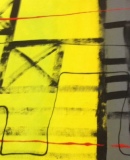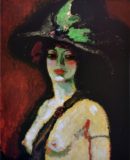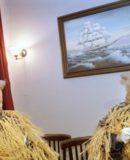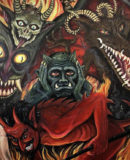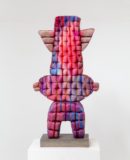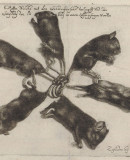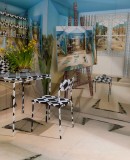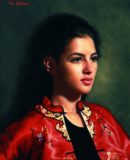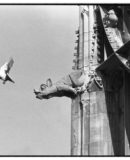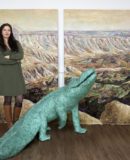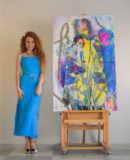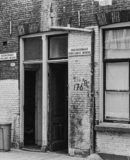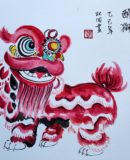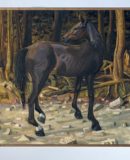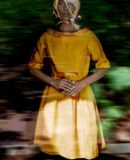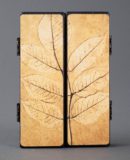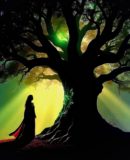World Artists and their Story, 37 - Stefan Yordanov
World Artists and their Story, 37 – Stefan Yordanov
The first work I saw from Stefan Yordanov was ‘Vision of Chimaera’ (picture 2). A Chimaera is basically a monstrous creature with its own and non-own body parts, but this wonderful beast with three heads and with lighting along its legs looked attractive. It stood at Bob Smit’s Gallery in Rotterdam and traveled to galleries in Amsterdam and Antwerp. Now it is sold, I hear from the maker in his studio in an artists’ complex in Bos en Lommer in Amsterdam.
In the middle of his studio is a similar, smaller sculpture in the making, also an animal, now with the anatomy of a dog. “The inspiration was Laika (picture 3), the dog that was allowed to enter space as a Russian astronaut. They knew in advance that Laika would never return to earth.” Yordanov usually starts with the skull. Laika’s skull in the sculpture comes from a journey through Sri Lanka. He gets other skulls from friends and collectors. Sometimes he buys copies via the Internet or he takes them from Bulgaria, his country of birth.
Light
The new Laika is for the moment briefly in dissolution. The artist occasionally takes pieces of his chest and his vertebrae to use them for other sculptures. But he will be restored and, when he is ready, he will travel, not into space, but to Rotterdam, in one of the public spaces of Art Fair Rotterdam. The light is pure, 4000 Kelvin. The light makes the animals energetic, and that is the intention. Yordanov: “It is the energy of a lost life, but you can also take it as the energy of a new life.”
It looks like neon light, but it is LED light. Stefan never worked with neon, he says. “I like simple and inexpensive materials that you can, for example, purchase from Praxis and Gamma. I transform the material, also things that I have collected into something new, something with potential.” Last time he came to Paris and came across new ‘building components’. He shows it, a round pink disc that can emit LED light with the aid of a battery. “Nice to work with in sculptures.”
Pegasus
Another work is his Pegasus 2.0. (2014) (picture 4), also a work that has its roots in Greek mythology. With this interactive work – it responds to the presence of people – he pays homage to his father, says Stefan Yordanov. “You can see it as a key work.” His father was a Bulgarian artist who was active as a lithographer and designer. “In his studio he made lithographs, color lithograph. Real monk work. He also made sets and costumes for Bulgarian opera, for films, TV and theater. As a child I helped him. I was often near the lithography press. Sometimes I was allowed to fill in a lithography with a drawing, for example a skeleton or a flying creature. His style was magic realism. In his graph he made horses and also Pegasus (picture 5). Unfortunately he died early in 2012. “
The beginning of Pegasus and the other large animal art works can be traced back to 2003 when Stefan made a light artwork of material he collected from an office building on the occasion of the Museum Night in Artis, the Amsterdam Zoo. “It was a kind of dinosaur, a skeleton from light sources, ‘Ten Light Years’ (picture 6) was it called, it was the first light artwork in the Geological Museum of Artis.” This work is also a key work.
Not only his father, but also his grandfather was an artist. He made landscapes and seascapes of the Black Sea. “He went outside painting with a group (picture 7). That is a Slavic / Balkan tradition. Poetry and mythology, especially that of Greek antiquity, fits in this quite well, for example with the fight between Good and Evil.” It does not surprise me when I hear that his mother is also an artist, “she makes cubist objects and ceramics “(picture 8), and also his sister. He has been doing joint projects with her for quite some time. “She is in Paris, has done the Art Academy in Bulgaria, and makes a lot of art for public space, for example an installation around Jules Verne. In collaboration with the Nature Museum in Nantes and Paris, we have created ‘Classifiction’ an installation in which the animals are not subdivided according to the classic Linnaeus scheme, but to physical and aesthetic characteristics. So we have placed white animals together. (picture 9)” He likes to break the expectations of the public. “That’s how you come to a dialogue.”
The Human Body
In the series ‘The Human Body’ there is different work: collages of faces. They hang in a row next to each other on the edge of the ceiling. The faces – often from (fashion) magazines – have undergone a transformation. “I have turned the inside out in an attempt to make the invisible qualities of a person, his soul, his memories, tangible. The soul of a human, that is a mysterious thing, where houses exactly the thoughts? They are hidden somewhere. By fragmenting the original photographs and then reconstructing them (picture 10) I tried to make that visible anyway. “
For the Amsterdam Light Festival he made a ‘Human Dome’ in 2015. As a circus act, a group makes a self-supporting dome. “The people are in the ‘Leonardo attitude’. It is an expression of the solidarity that we have in Europe. The work is durable, cheap and aesthetic, what more could you want? The American artist Richard Buckminster Fuller has done pioneering work in this field. The Aviodome at Schiphol is also built according to this principle.” I see an umbrella artwork that is an extension of this. “For the Bos en Lommer district I had made umbrella work ‘Het wachthuisje’, under the umbrella is a shelter where people can lie in a mosaic of pillows. I wanted to symbolize the transformation of the neighborhood.” However, it has remained with the design.
They are personal fascinations, his works of art. “They give meaning to what you do.” Sometimes it is autobiographical. He recently made a beast with two heads in a pink color (PushMe PullYou), which was about his recent divorce. While working, he sometimes encounters new questions and sometimes gets the solutions already presented. “Those are gifts. While working you often get the biggest presents. “
Unlearn
Stefan Yordanov graduated in 1994 as an autonomous artist / installation artist at the Rietveld Academy. He had already followed an art education in Bulgaria: at the age of 13 he went to a special secondary school with space for a lot of art. He learned to paint and paint still lifes, landscapes and figures. “That is a classical model academy, a little social realistic. In the Netherlands it was very different. Forget about your craft, was the motto, let yourself be guided by your personal history. The emphasis was on the concept and the properties of the material. I have unlearned a lot and learned a lot. “
Many of his classmates at the Rietveld did not last long after graduating. “You did not have to focus on selling your work, was the atmosphere. That turned out to be disastrous for many. If you want to succeed as an artist, you have to work hard, have good discipline and be actively involved in acquiring assignments. That was not done in the past. My advice to young people who do the Academy: keep going, do not let go, make sure you get a certain rhythm.” For three years he was a lecturer at the Amsterdam School of the Arts. “I was 27, the pupils were only slightly younger, 22.”
What is, finally, his philosophy? “For me it is an old theme, the dualism of body and mind. It is a classic theme, the Greeks were already occupied with it. I fill it in a contemporary way. “
Images: Stefan Yordanov, portrait, 2) Vision of Chimaera, 3) Laika, 4) Pegasus 2.0. 5) Lioubomir Jordanov (father), 6) Ten Light Years, 7) Vladimir Jordanov (grandfather), 8) Zdravka Olekova (mother), 9) Classification – Jules Verne (D. Jordanova & S. Yordanov), 10) Glossy Anatomy 5 , 40×50 cm, 2014
http://www.stefanyordanov.nl/home.html
https://ifthenisnow.eu/nl/verhalen/de-wereld-van-de-amsterdamse-kunstenaar-38-stefan-yordanov
Disclaimer: The views, opinions and positions expressed within this guest article are those of the author Walter van Teeffelen alone and do not represent those of the Marbella Marbella website. The accuracy, completeness and validity of any statements made within this article are not guaranteed. We accept no liability for any errors, omissions or representations. The copyright of this content belongs to Walter van Teeffelen and any liability with regards to infringement of intellectual property rights remains with the author.

